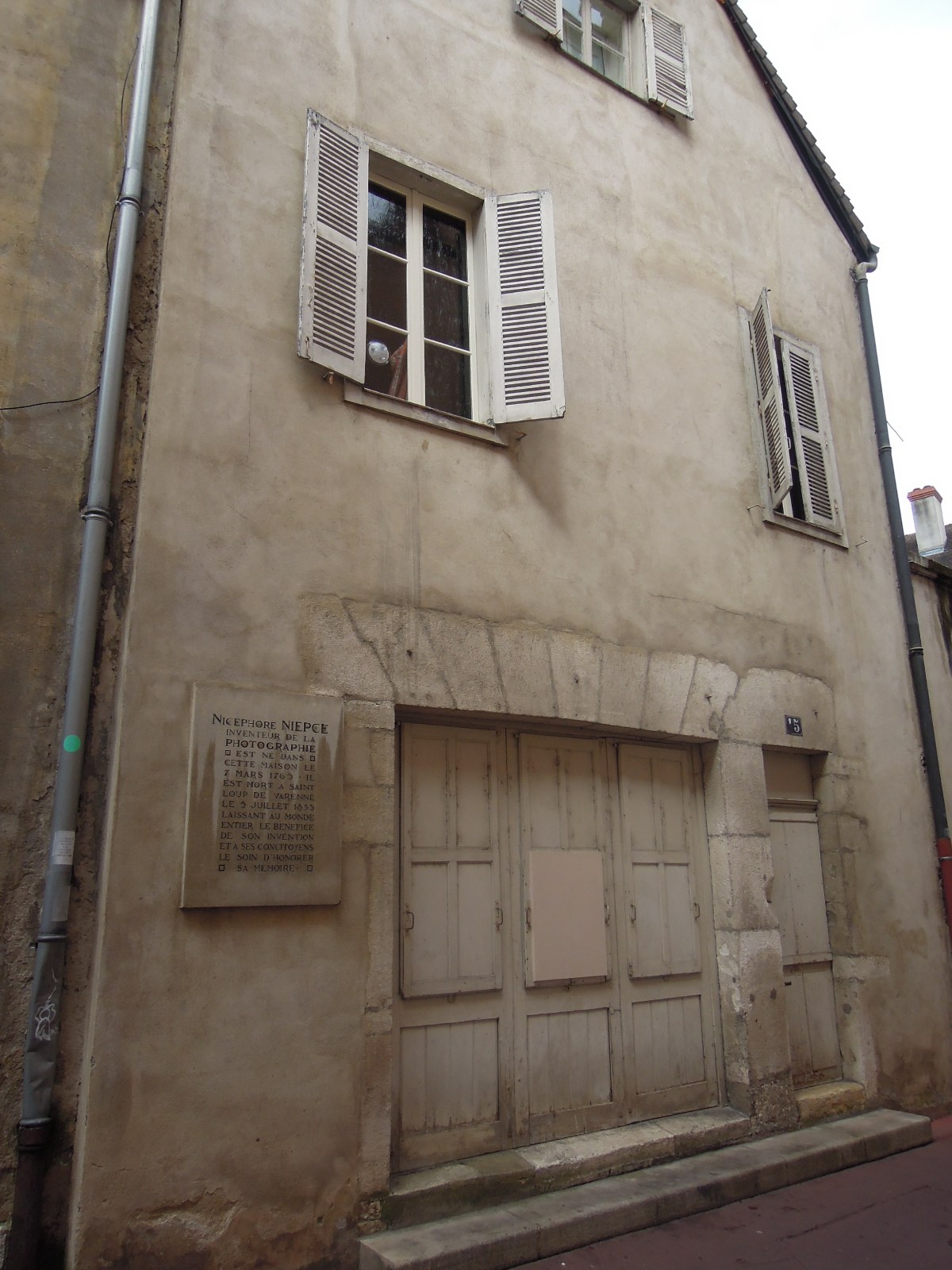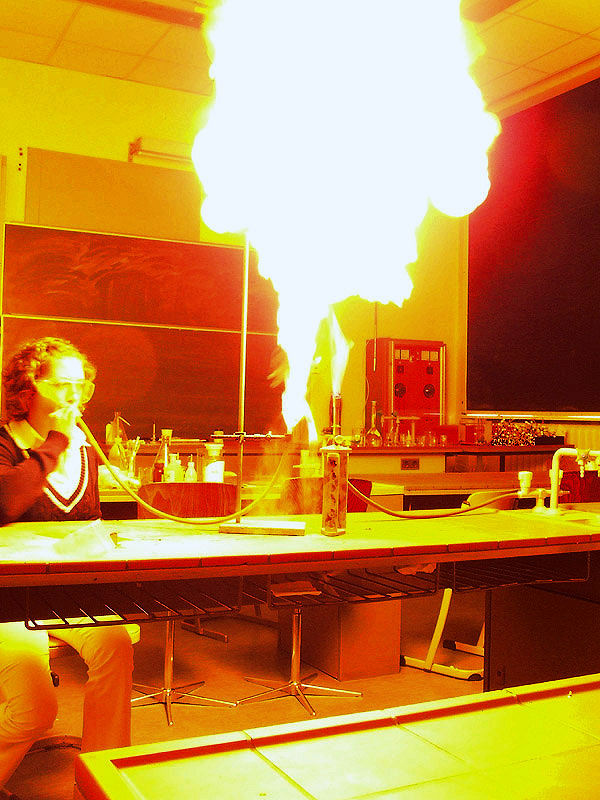|
Pyréolophore
The Pyréolophore () was probably the world's first internal combustion engine. It was invented in the early 19th century in Chalon-sur-Saône, France, by the Niépce brothers: Nicéphore (who went on to invent photography) and Claude. In 1807 the brothers ran a prototype internal combustion engine, and on 20 July 1807 a patent was granted by Napoleon Bonaparte after it had successfully powered a boat upstream on the river Saône. The Pyréolophore ran on what were believed to be "controlled dust explosions" of various experimental fuels. The fuels included mixtures of Lycopodium powder (the spores of Lycopodium, or clubmoss), finely crushed coal dust, and resin. Operating independently, in 1807 the Swiss engineer François Isaac de Rivaz built the de Rivaz engine, a hydrogen-powered internal combustion engine. These practical engineering projects may have followed the 1680 theoretical design of an internal combustion engine by the Dutch scientist Christiaan Huygens. The se ... [...More Info...] [...Related Items...] OR: [Wikipedia] [Google] [Baidu] |
Nicéphore Niépce
Joseph Nicéphore Niépce (; 7 March 1765 – 5 July 1833), commonly known or referred to simply as Nicéphore Niépce, was a French inventor, usually credited with the invention of photography. Niépce developed heliography, a technique he used to create the world's oldest surviving product of a photographic process: a print made from a photoengraved printing plate in 1825. In 1826 or 1827, he used a primitive camera to produce the oldest surviving photograph of a real-world scene. Among Niépce's other inventions was the Pyréolophore, one of the world's first internal combustion engines, which he conceived, created, and developed with his older brother Claude Niépce. Biography Early life Niépce was born in Chalon-sur-Saône, Saône-et-Loire, where his father was a wealthy lawyer. His older brother Claude (1763–1828) was also his collaborator in research and invention, but died half-mad and destitute in England, having squandered the family wealth in pursuit of ... [...More Info...] [...Related Items...] OR: [Wikipedia] [Google] [Baidu] |
François Isaac De Rivaz
François Isaac de Rivaz (Paris, December 19, 1752 – Sion, July 30, 1828) was a French-born Swiss inventor and a politician. He invented a hydrogen-powered internal combustion engine with electric ignition and described it in a French patent published in 1807. In 1808 he fitted it into a primitive working vehicle – "the world's first internal combustion powered automobile". Biography Isaac was born in Paris to a family from the Valais, now the canton of Valais in Switzerland. His father, Pierre de Rivaz, born in Saint-Gingolph, had moved to Paris in 1748 and established himself a clockmaker and industrialist. In 1763 the family settled in Moûtiers in Savoy (Kingdom of Sardinia). The last two boys, Anne-Joseph and Isaac, came to settle in Saint-Gingolph. It is not known at which schools he studied, but he became fluent in Latin plus mastering mathematics and geometry, whilst continuing his study of mechanics throughout his life. He qualified as both a surveyor and notar ... [...More Info...] [...Related Items...] OR: [Wikipedia] [Google] [Baidu] |
Internal Combustion Engine
An internal combustion engine (ICE or IC engine) is a heat engine in which the combustion of a fuel occurs with an oxidizer (usually air) in a combustion chamber that is an integral part of the working fluid flow circuit. In an internal combustion engine, the expansion of the high-temperature and high- pressure gases produced by combustion applies direct force to some component of the engine. The force is typically applied to pistons ( piston engine), turbine blades (gas turbine), a rotor (Wankel engine), or a nozzle ( jet engine). This force moves the component over a distance, transforming chemical energy into kinetic energy which is used to propel, move or power whatever the engine is attached to. This replaced the external combustion engine for applications where the weight or size of an engine was more important. The first commercially successful internal combustion engine was created by Étienne Lenoir around 1860, and the first modern internal combustion engi ... [...More Info...] [...Related Items...] OR: [Wikipedia] [Google] [Baidu] |
Claude Niépce
Claude Félix Abel Niépce (1764–1828) was a French inventor and the older brother of the more celebrated Nicéphore Niépce. Claude traveled to England to try to find a sponsor for their internal combustion engine and died there. His brother's later successful development of photography has eclipsed the part played by Claude. Life Claude Félix Abel Niépce was born to Claudine Thérèse Augustine (née De Courteville) and Bernard Niepce, a lawyer, on 28 October 1764, in Chalon-sur-Saône, in Burgundy. His family of landowners had connections to the Royal Court. His younger brother Nicéphore, who during the French Revolution had served in Sardinia and Italy, retired from the army in 1794 to recover from an eye disorder, and settled in Nice. Claude joined him there and they conceived the idea of an internal-combustion engine. In 1801 they returned to oversee the family estate, Le Gras, in the village of Saint-Loup-de-Varennes, near Chalon and there they worked together on ... [...More Info...] [...Related Items...] OR: [Wikipedia] [Google] [Baidu] |
Chalon-sur-Saône
Chalon-sur-Saône (, literally ''Chalon on Saône'') is a city in the Saône-et-Loire department in the region of Bourgogne-Franche-Comté in eastern France. It is a sub-prefecture of the department. It is the largest city in the department; however, the department capital is the smaller city of Mâcon. Geography Chalon-sur-Saône lies in the south of the Bourgogne-Franche-Comté and in the east of France, approximately north of Mâcon. It is located on the Saône river, and was once a busy port, acting as a distribution point for local wines which were sent up and down the Saône river and the Canal du Centre, opened in 1792. History Ancient times Though the site (ancient ''Cabillonum'') was a capital of the Aedui and objects of La Tène culture have been retrieved from the bed of the river here, the first mention of ''Cavillonum'' is found in Commentarii de Bello Gallico (VII, chs. 42 and 90). The Roman city already served as a river port and hub of road communications, o ... [...More Info...] [...Related Items...] OR: [Wikipedia] [Google] [Baidu] |
Lycopodium Powder
Lycopodium powder is a yellow-tan dust-like powder, consisting of the dry spores of clubmoss plants, or various fern relatives. When it is mixed with air, the spores are highly flammable and are used to create dust explosions as theatrical special effects. The powder was traditionally used in physics experiments to demonstrate phenomena such as Brownian motion. Composition The powder consists of the dry spores of clubmoss plants, or various fern relatives principally in the genera ''Lycopodium'' and ''Diphasiastrum''. The preferred source species are ''Lycopodium clavatum'' (wolf's-foot clubmoss) and ''Diphasiastrum digitatum'' (common groundcedar), because these widespread and often locally abundant species are both prolific in their spore production and easy to collect. Main uses Today, the principal use of the powder is to create flashes or flames that are large and impressive but relatively easy to manage safely in magic acts and for cinema and theatrical special effect ... [...More Info...] [...Related Items...] OR: [Wikipedia] [Google] [Baidu] |
De Rivaz Engine
The de Rivaz engine was a pioneering reciprocating engine designed and developed from 1804 by the Franco-Swiss inventor Isaac de Rivaz. The engine has a claim to be the world's first internal combustion engine and contained some features of modern engines including spark ignition and the use of hydrogen gas as a fuel. Starting with a stationary engine suitable to work a pump in 1804, de Rivaz progressed to a small experimental vehicle built in 1807, which was the first wheeled vehicle to be powered by an internal combustion engine. In subsequent years de Rivaz developed his design, and in 1813 built a larger 6-meter long vehicle, weighing almost a ton. Background Towards the end of the 18th century Isaac de Rivaz, a Franco-Swiss artillery officer and inventor, designed several successful steam powered carriages, or charettes as he called them in the French language. His army experience with cannon had led him to think about using an explosive charge to drive a piston instead of ... [...More Info...] [...Related Items...] OR: [Wikipedia] [Google] [Baidu] |
Reaction (physics)
As described by the third of Newton's laws of motion of classical mechanics, all forces occur in pairs such that if one object exerts a force on another object, then the second object exerts an equal and opposite reaction force on the first. The third law is also more generally stated as: "To every action there is always opposed an equal reaction: or the mutual actions of two bodies upon each other are always equal, and directed to contrary parts."This translation of the third law and the commentary following it can be found in the " Principia" opage 20 of volume 1 of the 1729 translation The attribution of which of the two forces is the action and which is the reaction is arbitrary. Either of the two can be considered the action, while the other is its associated reaction. Examples Interaction with ground When something is exerting force on the ground, the ground will push back with equal force in the opposite direction. In certain fields of applied physics, such as biomechanics, ... [...More Info...] [...Related Items...] OR: [Wikipedia] [Google] [Baidu] |
Ignition
Ignition may refer to: Science and technology * Firelighting, the human act of creating a fire for warmth, cooking and other uses * Combustion, an exothermic chemical reaction between a fuel and an oxidant * Fusion ignition, the point at which a nuclear fusion reaction becomes self-sustaining * Ignition SCADA, software by Inductive Automation Arts and entertainment * ''Ignition'' (video game), a top-down racing game for PC published in 1997 * ''Ignition'' (2001 film), directed by Yves Simoneau * Ignition Entertainment, a computer video games company founded in 2002 * '' Ignition! An Informal History of Liquid Rocket Propellants'', (1972) by John Drury Clark Music Albums and EPs * ''Ignition'' (B1A4 album), 2012 * ''Ignition'' (Darude album), 2001 * ''Ignition'' (John Waite album), 1982 * ''Ignition'' (Mark Boals album), 1998 * ''Ignition'' (Nicky Romero album), 2014 * ''Ignition'' (The Offspring album), 1992 * ''Ignition'' (The Music Machine album) * ''Ignition!'', album ... [...More Info...] [...Related Items...] OR: [Wikipedia] [Google] [Baidu] |
Combustion
Combustion, or burning, is a high-temperature exothermic redox chemical reaction between a fuel (the reductant) and an oxidant, usually atmospheric oxygen, that produces oxidized, often gaseous products, in a mixture termed as smoke. Combustion does not always result in fire, because a flame is only visible when substances undergoing combustion vaporize, but when it does, a flame is a characteristic indicator of the reaction. While the activation energy must be overcome to initiate combustion (e.g., using a lit match to light a fire), the heat from a flame may provide enough energy to make the reaction self-sustaining. Combustion is often a complicated sequence of elementary radical reactions. Solid fuels, such as wood and coal, first undergo endothermic pyrolysis to produce gaseous fuels whose combustion then supplies the heat required to produce more of them. Combustion is often hot enough that incandescent light in the form of either glowing or a flame is prod ... [...More Info...] [...Related Items...] OR: [Wikipedia] [Google] [Baidu] |
Bellows
A bellows or pair of bellows is a device constructed to furnish a strong blast of air. The simplest type consists of a flexible bag comprising a pair of rigid boards with handles joined by flexible leather sides enclosing an approximately airtight cavity which can be expanded and contracted by operating the handles, and fitted with a valve allowing air to fill the cavity when expanded, and with a tube through which the air is forced out in a stream when the cavity is compressed. xford English Dictionary, 2nd ed: bellows/ref> It has many applications, in particular blowing on a fire to supply it with air. The term "bellows" is used by extension for a flexible bag whose volume can be changed by compression or expansion, but not used to deliver air. For example, the light-tight (but not airtight) bag allowing the distance between the lens and film of a folding photographic camera to be varied is called a bellows. Etymology "Bellows" is only used in plural. The Old English na ... [...More Info...] [...Related Items...] OR: [Wikipedia] [Google] [Baidu] |







